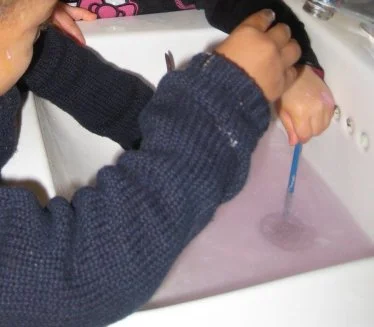The Forbidden Why
November, 2019
If you have ever spent time around three-year-olds, you know that they become preoccupied with why: Why is that bird in our yard? Why is it foggy? Why is that bouquet on the table? If you provide a concise, factual answer, you usually get another why.
Why do children start to ask why so often? Because that is what the brain is for.
The brain has lots of jobs of course. But in essence and in sum, the function of the brain is to make sense. Our ability to understand and manipulate cause and effect is what sets us apart from other animals and allows us to organize ourselves into a society.
Children ask a certain kind of why that we often would prefer not to hear: Why should I do what you are asking me to do? The people in charge don’t love to hear that why. It can seem like a threat to efficiency or even basic functioning.
On the other hand, we expect children to be critical thinkers these days. We claim to want children to be divergent thinkers. That is, for them to succeed as grown-ups, we want them to be able to challenge assumptions and innovate. Concepts like “disruptive,” which used to imply undesirable behavior and outcomes, are now offered up, not just as productive, but necessary to individual and institutional survival.
In the first 20 years of life, the two settings that will inspire children to ask that kind of why are family and school. Families are fragile systems – shared control is a complicated proposition. But what about schools?
As children’s minds begin to focus on cause and effect, we ask them to swallow a very rigid set of justifications for what school demands: because you need to make friends; because you need to be ready for the increasing demands of school; because you need to get into a good college; because you need a good job. (Let’s note that only one of those things has anything to do with the present moment)
Have you noticed that many of the most adept thinkers in our society don’t buy these? That the most analytic and thoughtful children are often disenfranchised from education at an early age? That many very dutiful kids work themselves to the bone for 15 years to live up to these justifications until their first year of college, or after they graduate, and then feel a despairing lack of clarity over what they want their lives to be or mean?
Education is, or should be, about fostering the development of the mind and thinking. But the mind asks why, and the central, most important why is forbidden: Why are we learning this way? What is this for?
In large, under-resourced public schools, this why is forbidden because it interferes with moving large groups of children through the system efficiently. In the most exclusive private schools, this why is forbidden because it might inspire children to object to working until 2 AM every morning to maybe get into a prestigious college that may help you in your adult life.
How could education celebrate the why? How is it possible to encourage children to question the proposition of education and still offer a coherent educational process?
The seeds of the answer lie in the Inquiry model. Inquiry is about the why. It is about respect and curiosity for children’s questions, and the willingness on the part of adults to let children help guide the learning process. Adults provide a framework and reflective guidance. As with existing models of education, there are clear criteria for when and how to be flexible and when to rely on global expectations or schedules.
By exploring questions together, Inquiry not only accommodates children’s need to make sense and explore order. It also returns the overall aim of education to its natural place – a focus on developing the mind, and not just filling the mind with content and skills. “What is this for?” morphs from an obstacle to an aim – something we teach children to ask all their lives.
This is based on a changing concept of children’s intellectual capacities and the meaning of education. Education in America in particular has become frantically vertical – that is, focused almost entirely on the future. School today, from family day care through high school, professes to be about “providing the foundation for. . . .” or “preparing children to be 21st century citizens.” As Lilian Katz, Yvonne Kogan and Sylvia Chard point out in Engaging Minds: The Project Approach, this both overestimates children (academically and behaviorally) and underestimates them (intellectually, creatively, morally and spiritually).
In places like Northern Italy or New Zealand, children are recognized as citizens and contributors today. Education is about now – about a child’s right and ability to observe her world, ask questions and investigate them. Educators don’t expect children to reach pre-determined adult conclusions from this process. They are instead curious about the children’s authentic discovery and thinking, and eager to be surprised. As Bridgette Towelle of Kids Domain in Auckland puts it, “Pedagogy” is returned to its Latin root – to walk together (Ped, as in foot) and discover together.
Innovation starts with why. It starts with examining assumptions. It often slows or even tears down what has been accomplished so far in order to find the most effective direction. Without that kind of divergent thinking, we would not have combustion engines, hip hop, or a vaccine for polio. This is perhaps why we fetishize disruption in contemporary adult society, while prohibiting it among children.
This shift is not easy. It requires a “disruption” of our assumptions and order. But this is necessary. If society today relies on disruption to find solutions, then we can’t just learn to let children disrupt our educational systems. We must disrupt them, to redeem education itself.

